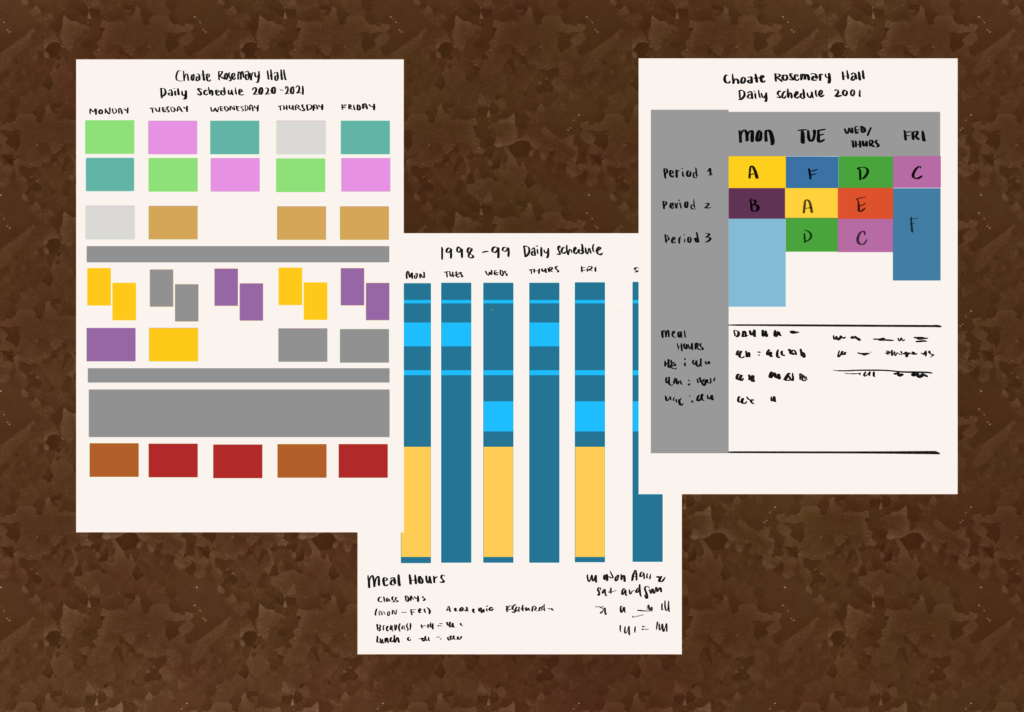Though a popular gathering space for Choate students, the Humanities Rotunda is also a historical spot. The space showcases a wide range of art created throughout the school’s history — from cotton tapestries to wooden carvings to bronze sculptures. More than mere decorations, this artwork tells the unique and colorful history of Choate Rosemary Hall.
If you walk into the Rotunda from the door closest to Christian Street, the first visible artwork is a watercolor painting called Morning Snow Rosemary Chapel. Created by Mr. Julius Delbos, once a beloved Rosemary Hall art teacher, this painting depicts Rosemary Hall’s St. Bede’s Chapel, in Greenwich, Connecticut. According to Choate Rosemary Hall archivist Ms. Judy Donald, St. Bede’s Chapel was both a place of worship and gathering at Rosemary Hall: every morning, all students would attend school meeting there. Another Delbos piece hangs opposite Morning Snow, a watercolor titled Main Building.
The tapestry on the Rotunda wall attests to the outsize role religion played at Rosemary Hall. On Rosemary Hall’s fiftieth anniversary, in 1940, hundreds of alumni returned and sewed “kneelers,” pads that people kneel on when they pray, as a gift to the school. These kneelers make up the tapestry seen in the Rotunda today. If you look closely, each kneeler resembles a different aspect of the school. In the first row, the third kneeler from the left is the coat of arms of Rosemary Hall, the second kneeler in the second row celebrates the school’s arts, and the first kneeler in the last row portrays a spider spinning the web to applaud the dedication and diligence of the Rosemary Hall community.
Across from the tapestry is a double portrait of the two co-headmistresses of Rosemary Hall. On the left sits Ms. Caroline Ruutz Rees. On the right is Ms. Mary Elizabeth Lowndes. One of the first headmistresses of Rosemary Hall, Ms. Ruutz Rees served the school for more than 40 years, the longest-serving head of school in Rosemary Hall’s history. Ms. Lowndes was a scholar and sportswoman who helped to create Rosemary Hall.
Perhaps the most attention-grabbing artifacts within the Rotunda are the giant wooden boards hanging in the hallway between North Main Street and the Humanities Rotunda. Brought to Choate many decades ago, these wooden pieces have women’s names and dates carved into them. These girls were called the duces of the school — Latin for leaders. Also known as the ten-bar girls, all of the women won the Rosemary Hall Student Council election more than ten times. The Rosemary Hall student government held elections much more frequently than the current Student Council, allowing this system to occur.
As modern-day Choate students walk through the Rotunda, they pass a visual record of a Rosemary Hall long past. As Ms. Donald put it, “The Rotunda has become the display area for significant pieces of memorabilia and art. It’s a way to bring historical items to campus so all students can enjoy them.”




